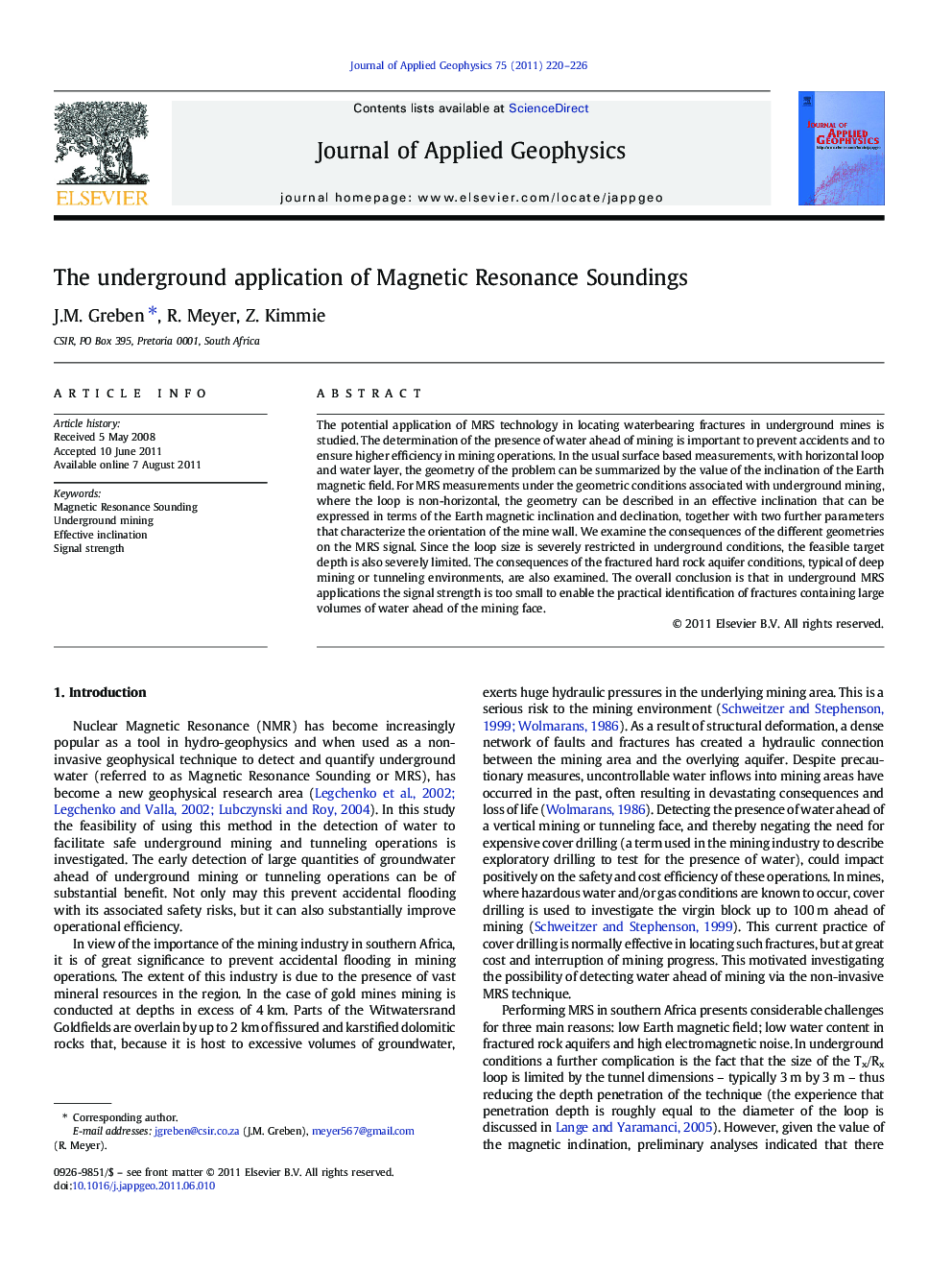| Article ID | Journal | Published Year | Pages | File Type |
|---|---|---|---|---|
| 4740611 | Journal of Applied Geophysics | 2011 | 7 Pages |
The potential application of MRS technology in locating waterbearing fractures in underground mines is studied. The determination of the presence of water ahead of mining is important to prevent accidents and to ensure higher efficiency in mining operations. In the usual surface based measurements, with horizontal loop and water layer, the geometry of the problem can be summarized by the value of the inclination of the Earth magnetic field. For MRS measurements under the geometric conditions associated with underground mining, where the loop is non-horizontal, the geometry can be described in an effective inclination that can be expressed in terms of the Earth magnetic inclination and declination, together with two further parameters that characterize the orientation of the mine wall. We examine the consequences of the different geometries on the MRS signal. Since the loop size is severely restricted in underground conditions, the feasible target depth is also severely limited. The consequences of the fractured hard rock aquifer conditions, typical of deep mining or tunneling environments, are also examined. The overall conclusion is that in underground MRS applications the signal strength is too small to enable the practical identification of fractures containing large volumes of water ahead of the mining face.
► MRS can in principle detect water underground. ► MRS can prevent flooding in mining if signal can be measured accurately. ► Signal strength depends sensitively on mine wall orientation. ► Even under optimal conditions signal provides insufficient depth penetration. ► Smallness signal mainly due to limited space underground for MRS loop.
